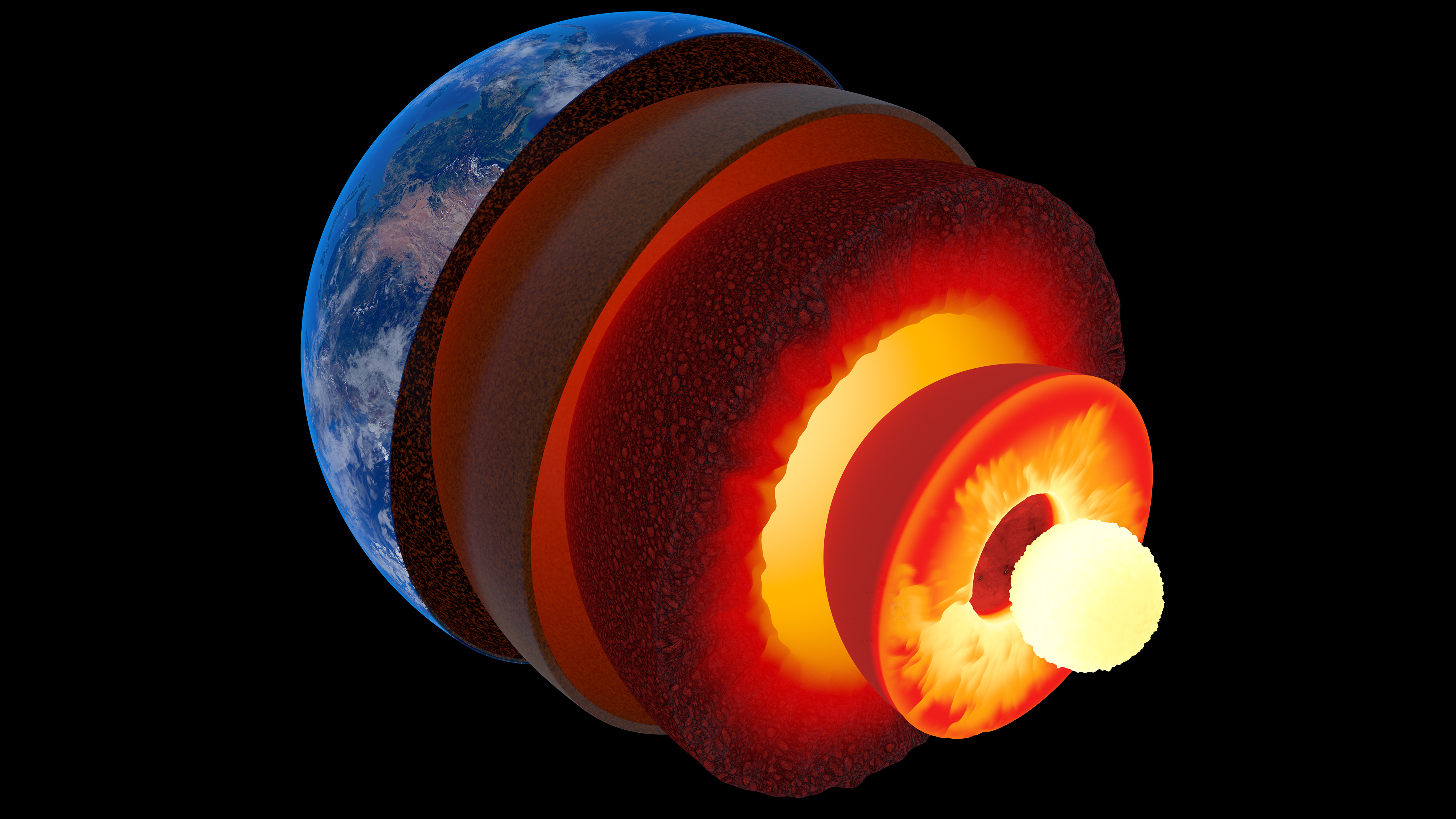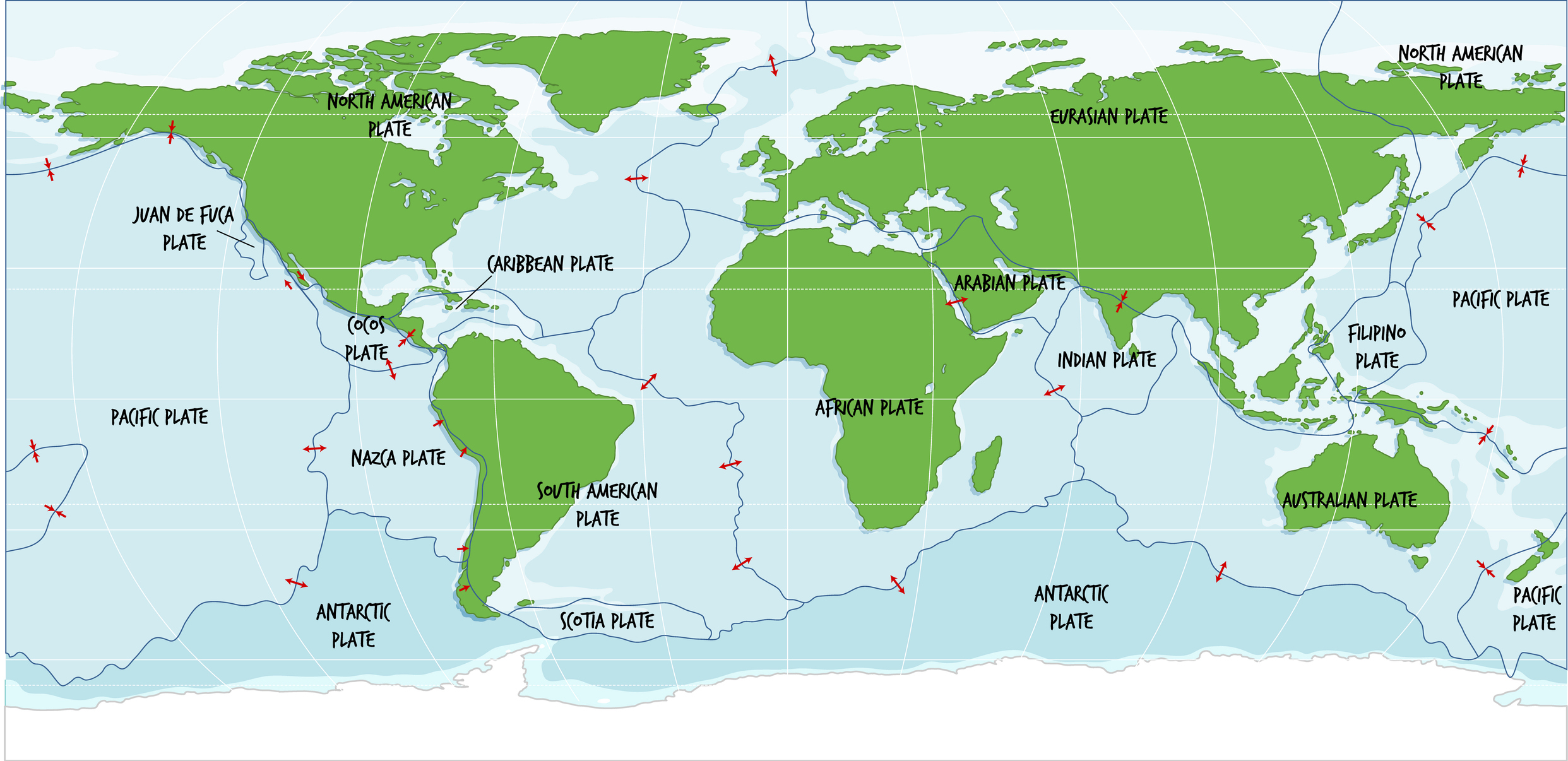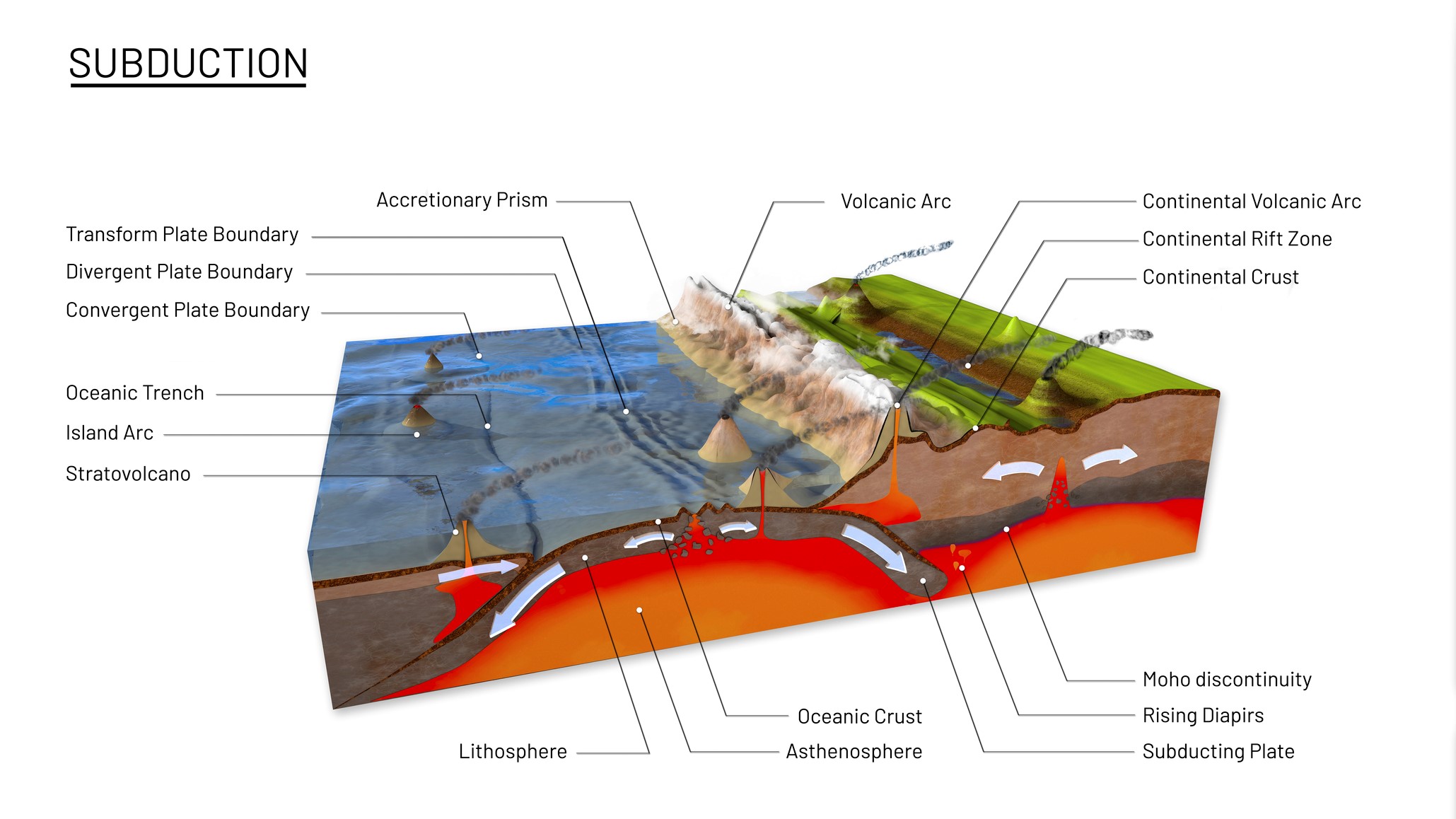The lithosphere: Facts about Earth's outer shell
The lithosphere is the layer of Earth we call home.

The lithosphere is the outermost layer of Earth, composed of the crust and the brittle part of the upper mantle. The term lithosphere is derived from the Greek words "lithos," meaning stone, and "sphaira," meaning globe or ball.
Sandwiched between the atmosphere above and the asthenosphere below, the lithosphere can reach depths of up to 190 miles (300 kilometers), according to The Geological Society.
At the lithosphere-asthenosphere boundary — when temperatures reach 2,400 degrees Fahrenheit (1,300 degrees Celsius) — rocks take on a viscous nature and flow, albeit very slowly. The rocks remain solid due to the high pressure caused by the miles of mantle and crust above, but move rate of one or two inches (2.5 to 5 centimeters) per year, according to Sciencing.com. This change in ductility — the ability of a material to deform or stretch under stress — marks the boundary between the lithosphere and asthenosphere in the upper mantle.
The perpetual "slip 'n' slide" motion of the lithosphere on the asthenosphere caused it to fragment into several large sections called tectonic plates.
Related: What makes Earth unique?
Lithosphere varieties
The lithosphere can be divided into two varieties: oceanic and continental.
Oceanic crust is relatively thin and dense, according to Sciencing.com. The oceanic crust is mainly composed of basalt rock rich in silica and magnesium. It ranges in thickness from just a few miles at ocean-spreading centers such as the Mid-Atlantic Ridge, to 60 to 90 miles (100 to 150 km) under mature ocean basins, according to The Geological Society.
Continental crust, on the other hand, is mainly composed of granite rocks rich in silica and aluminum and can reach thicknesses of up to 190 miles (300 km). Continents are at a higher elevation than the ocean floor because continental crust is less dense than oceanic crust and therefore "floats" higher on the mantle, according to the University of California, Santa Barbara.
The lithosphere and plate tectonics
The lithosphere is divided into sections known as tectonic plates. There are seven major plates and eight minor plates according to The Geological Society. Earth is unique in this respect, we have yet to find another planet that possesses a lithosphere divided into true plates, according to the Lunar and Planetary Institute.

The asthenosphere acts as a lubricant for the slabs of lithospheric plates, allowing them to slide along, bump into and rub past each other — resulting in geological events such as volcanic eruptions and earthquakes.
Plate tectonics is also responsible for some of the most striking landforms on Earth, such as the Himalayas, which stretch for 1,800 miles (2,900 km) along the border of India and Tibet. The colossal mountain range was forged between 40 and 50 million years ago when the Indian and Eurasian plates collided, according to the United States Geological Survey.
Movement along the San Andreas fault line is pushing Los Angeles 1.8 inches (4.6 cm) closer to San Francisco every year?
According to National Oceanic and Atmospheric Administration (NOAA), large oceanic ridges such as The Mid-Atlantic Ridge are formed at divergent plate boundaries — when two tectonic plates are moving away from each. When molten rock flows up through the asthenosphere to the seafloor it produces large basaltic eruptions. As the plates diverge, new ocean floor is created and the plates continue to move apart. When an oceanic plate collides with a "lighter" plate like a continental plate, it nosedives beneath it in a process called subduction, according to Sciencing.com. Tectonic plates likely evolved very early in our planet's 4.6 billion-year history and have been playing a slow-motion game of bumper cars ever since.

How do we know the lithosphere and asthenosphere are there?
We know the lithosphere exists because it's where we live and we can see the direct effects of plate tectonics through spectacular volcanoes and lofty mountain ranges. But how do we know what's going on below the surface?
Earthquakes and seismic waves can tell us a lot about the Earth's interior, including where the lithosphere and asthenosphere are located.
During an earthquake, primary (P) and secondary (S) waves spread out through the Earth's interior, according to Columbia University. Special stations situated around the world detect these waves and record their velocities, which tell scientists a lot about the composition, temperature and pressure of the material through which the waves have traveled.
Seismic waves travel faster through dense material like solid rocks and slow down in liquids. At depths of around 60 to 90 miles (100 to 250 km), seismic waves begin to slow down, indicating that they have entered a partially molten (approximately 1%) zone — the asthenosphere. Rocks in the seismic low-velocity zone — the asthenosphere — partially melt due to either increased temperature or reduced pressure. Such partial melting is more common at hot spots and plate boundaries, according to the Geological Society.
Additional resources
Explore the most detailed map ever of the tiny magnetic signals generated by Earth's lithosphere with ESA. Tour the world's volcanoes, earthquakes, impact craters and plate tectonics with this incredibly detailed map from the United States Geological Survey. Take a look at what's beneath the surface and learn about Earth's interior with the Open University.
Bibliography
Boden, David R. Geologic fundamentals of geothermal energy. CRC Press, 2016.
Bartzsch, Stefan, Sergei Lebedev, and Thomas Meier. "Resolving the lithosphere–asthenosphere boundary with seismic Rayleigh waves." Geophysical Journal International 186.3 (2011): 1152-1164.
Artemieva, Irina. Lithosphere: an interdisciplinary approach. Cambridge University Press, 2011.
Fischer, Karen M., et al. "The lithosphere-asthenosphere boundary." Annual Review of Earth and Planetary Sciences 38 (2010): 551-575.
Join our Space Forums to keep talking space on the latest missions, night sky and more! And if you have a news tip, correction or comment, let us know at: community@space.com.
Get the Space.com Newsletter
Breaking space news, the latest updates on rocket launches, skywatching events and more!

Daisy Dobrijevic joined Space.com in February 2022 having previously worked for our sister publication All About Space magazine as a staff writer. Before joining us, Daisy completed an editorial internship with the BBC Sky at Night Magazine and worked at the National Space Centre in Leicester, U.K., where she enjoyed communicating space science to the public. In 2021, Daisy completed a PhD in plant physiology and also holds a Master's in Environmental Science, she is currently based in Nottingham, U.K. Daisy is passionate about all things space, with a penchant for solar activity and space weather. She has a strong interest in astrotourism and loves nothing more than a good northern lights chase!










